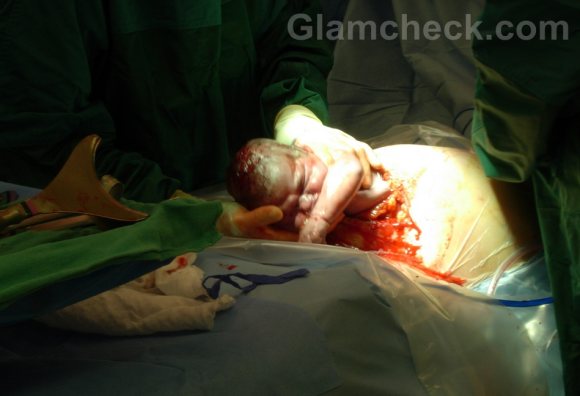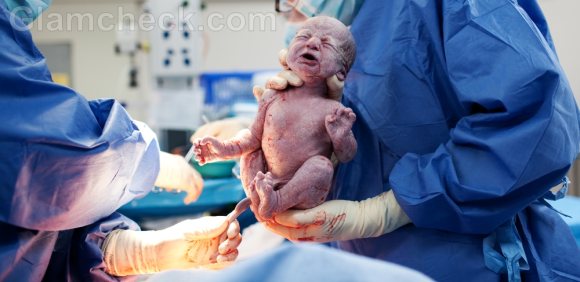Many women today will opt for caesarean section delivery because they are afraid of labor pain. A caesarean section delivery should not be viewed as an alternative to natural childbirth. It is not an either/or situation for women who are otherwise healthy and have no pregnancy complications. A caesarean section delivery was developed as a last resort surgery to help mother and baby survive in case of an emergency. And it should ideally still be treated that way.
Unfortunately, many couples today decide on caesarean section delivery even before they get pregnant. Some because they want to avoid the pain of childbirth and some because they want the baby to be born on a particular day. Since most hospitals will do a caesarean section delivery as long as you pay the bills, the practice is now considered normal and no efforts are being made to put a stop to it except by the most conscientious doctors. About 1 in 4 women today will have caesarean section delivery.
That being said, caesarean section delivery is truly a boon for women who have pregnancy complications or are suffering from a health problem that requires immediate delivery of the baby.
What is Caesarean Section Delivery?
 The natural and safest way to give birth is through vaginal delivery. Sometimes, there may be problems with a vaginal delivery or there may not be time for a normal delivery as the mother or baby’s life is at stake. At such a time, your doctor will suggest a caesarean section delivery.
The natural and safest way to give birth is through vaginal delivery. Sometimes, there may be problems with a vaginal delivery or there may not be time for a normal delivery as the mother or baby’s life is at stake. At such a time, your doctor will suggest a caesarean section delivery.
A caesarean section delivery involves a 3 to 4 inch cut into the stomach and uterus to get the baby out. Caesarean section delivery is commonly known simply as a c-section. If you know that some pregnancy complications will require you to have a caesarean section delivery, then you fortunately have the opportunity to discuss caesarean section delivery with your doctor – the pros and cons, what to expect – beforehand. But it may not always be possible to know in advance when a caesarean section delivery will be required. The decision may have to be made when you are on the birthing table and something goes wrong.
 Caesarean section delivery does not take very long. In an emergency situation, the baby can be delivered in less than two minutes. If it is a planned caesarean section, then the procedure will take about 15 minutes, plus 45 minutes to deliver the placenta and to stitch up the incisions. You will have to stay at the hospital for about 4 to 5 days after caesarean section delivery has been performed if there are no other problems. If you had other pregnancy complications it may warrant a longer stay.
Caesarean section delivery does not take very long. In an emergency situation, the baby can be delivered in less than two minutes. If it is a planned caesarean section, then the procedure will take about 15 minutes, plus 45 minutes to deliver the placenta and to stitch up the incisions. You will have to stay at the hospital for about 4 to 5 days after caesarean section delivery has been performed if there are no other problems. If you had other pregnancy complications it may warrant a longer stay.
When is Caesarean Section Delivery Recommended?
Your doctor may suggest caesarean section delivery in any of the following cases.
- Stopped or stalled labor is one of the reasons for caesarean section delivery. This is when the mother goes into labor for several hours but the cervix is not dilating enough to allow for natural childbirth.
- If an ultrasound shows that your baby is in a breech or transverse position. This is when the baby is not in the ideal position for birth (head to cervix). A baby in a breech position will have its buttocks or feet near the cervix. And one in a transverse position will have its side or shoulder against the cervix. Vaginal delivery in both cases may be impossible. The safest way to deliver the baby will be through caesarean section delivery
- Although not always the case, a woman carrying multiple babies is generally a good candidate for caesarean section delivery.
- If your baby’s head is too big for a vaginal delivery, you can get a caesarean section delivery.
- Caesarean section delivery is preferred when there are placental pregnancy complications like placenta previa or placental abruption.
- Some women have health problems which make vaginal delivery a life-threatening ordeal. In such cases, caesarean section delivery is recommended.
- A caesarean section delivery will also be suggested if the baby has a birth defect.
- During normal labor, your baby may undergo fetal distress. This means that the baby is developing problems and needs to be delivered immediately via caesarean section.
- A C-section in a prior pregnancy may mean that caesarean section delivery is a better option for you in your current pregnancy as well.
- If you have an infection like genital herpes, it would be safer to have caesarean section delivery as a vaginal delivery could infect the baby when it is on its way out.
- The umbilical chord may sometimes get wrapped around the baby’s neck. In other cases, the chord may be positioned between the baby and the cervix, in which case the umbilical chord will be delivered before the baby. In both cases, caesarean section delivery is a safer method.
Risks of Caesarean Section Delivery
Caesarean section delivery is now considered a very routine procedure. However, all surgeries carry some level of risk, or the doctors would not have you signing consent forms that absolve them of liability. Here are just a few of the known risks of caesarean section delivery.
- Heavy bleeding during caesarean section delivery is a very high risk. Although it rarely gets bad enough to call for a blood transfusion, it is nevertheless a far from ideal situation and may lead to anemia.
- It is always possible that the caesarean section delivery can cause some damage to nearby organs like the bladder.
- You or your baby may develop an adverse reaction to the anesthesia.
- The medication prescribed after caesarean section delivery may also cause a reaction.
- A blood vessel may rupture or get cut during caesarean section delivery.
- You are at higher risk for death during delivery via a caesarean section than if you opt for vaginal delivery.
Future Complications of Caesarean Section Delivery
Before we get into the complications, you must remember that caesarean section delivery is after all a surgery on your body. And any kind of surgery causes trauma to some extent, both mental and physical, whether or not you are consciously aware of it. It is thus best to avoid caesarean section delivery unless absolutely necessary. If that does not convince you, maybe the following complications of caesarean section delivery will.
- Caesarean section delivery leaves a scar on the uterus. For reasons unknown to doctors and researchers, a uterine scar is a risk factor for some pretty serious pregnancy complications. The most dangerous of all is placenta accreta, where the embryo attaches itself deep into the uterine wall rather than just on the uterine wall. Although not all women with uterine scars from caesarean section delivery develop placenta accreta, enough do that it has been noted as a strong risk factor for placenta accreta.
- Caesarean section delivery also increases your risk for placenta previa, a pregnancy complication characterized by a placenta that develops too low in the uterus, thus partially or wholly blocking the cervix, your baby’s exit from the womb, in turn leading to complications during delivery. Once again, doctors speculate that the placenta may be encouraged for reasons unknown to develop along the uterine scar left from a prior surgery.
- The scar left behind may also tear during a future pregnancy.
- Another complication of caesarean section delivery is that it can increase your risk for bleeding during a pregnancy in the future.
- There is a small chance that while making the incision for caesarean section delivery, the doctor may nick the baby. Even a minor injury on a baby can have severe complications.
- Women who have caesarean section delivery are at some risk for infections after the procedure, especially endometritis – an inflammation or infection of the lining of the uterine wall.
- You may even develop a wound along the site where the incision was made for your caesarean section delivery.
- Having a caesarean section delivery increases your risk for developing blood clots in your veins.
- Babies born of caesarean section delivery are at higher risk for breathing problems. This has proven to be the case when a lung maturity test was not conducted before a caesarean section delivery to check if the baby’s lungs were ready for life outside the womb.
- Recovery from caesarean section delivery will take longer than recovery from normal vaginal delivery, sometimes stretching out for many months after the caesarean section delivery.
- You may experience pain on the incision site for a long time after the caesarean section delivery has been done, sometimes as much as six months after the procedure. Immediately after the caesarean section delivery, you may have difficulty taking deep breaths.
- Some women have reported that having a caesarean section delivery left them with a not-so-good feeling about the birthing process. For this reason, caesarean section delivery may cause a minor setback in the initial bonding of mother and baby.
Image: Shutterstock
